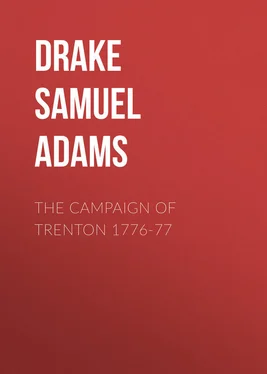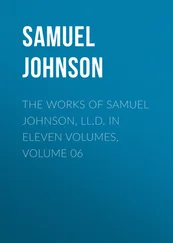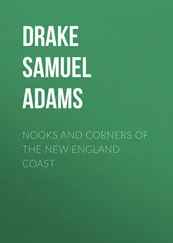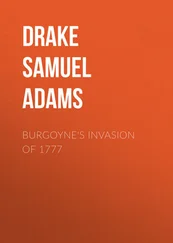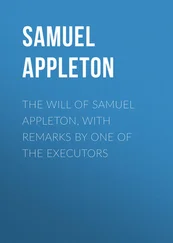Samuel Drake - The Campaign of Trenton 1776-77
Здесь есть возможность читать онлайн «Samuel Drake - The Campaign of Trenton 1776-77» — ознакомительный отрывок электронной книги совершенно бесплатно, а после прочтения отрывка купить полную версию. В некоторых случаях можно слушать аудио, скачать через торрент в формате fb2 и присутствует краткое содержание. Жанр: foreign_antique, foreign_prose, на английском языке. Описание произведения, (предисловие) а так же отзывы посетителей доступны на портале библиотеки ЛибКат.
- Название:The Campaign of Trenton 1776-77
- Автор:
- Жанр:
- Год:неизвестен
- ISBN:нет данных
- Рейтинг книги:3 / 5. Голосов: 1
-
Избранное:Добавить в избранное
- Отзывы:
-
Ваша оценка:
- 60
- 1
- 2
- 3
- 4
- 5
The Campaign of Trenton 1776-77: краткое содержание, описание и аннотация
Предлагаем к чтению аннотацию, описание, краткое содержание или предисловие (зависит от того, что написал сам автор книги «The Campaign of Trenton 1776-77»). Если вы не нашли необходимую информацию о книге — напишите в комментариях, мы постараемся отыскать её.
The Campaign of Trenton 1776-77 — читать онлайн ознакомительный отрывок
Ниже представлен текст книги, разбитый по страницам. Система сохранения места последней прочитанной страницы, позволяет с удобством читать онлайн бесплатно книгу «The Campaign of Trenton 1776-77», без необходимости каждый раз заново искать на чём Вы остановились. Поставьте закладку, и сможете в любой момент перейти на страницу, на которой закончили чтение.
Интервал:
Закладка:
Having arrived at New York, Washington's force was increased by the two or three thousand men who had been hastily summoned for its defence, [4] General Lee had been sent to New York as early as January. He took military possession of the city, with militia furnished by Connecticut.
and who were then busily employed in throwing up works at various points, under the direction of the engineers.
Make-up of the army.
Now, it is usual to call such a large body of raw recruits, badly armed, and without discipline, an army, in the same breath as a well armed and thoroughly disciplined body. This one had done good service behind entrenchments, and in some minor operations at Boston had shown itself possessed of the best material, but the situation was now to be wholly reversed, the besiegers were to become the besieged, their mistakes were to be turned against them, the experiments of inexperience were to be tested at the risk of total failure, and the morale severely tried by the grumbling and discontent arising for the most part from laxity of discipline, but somewhat so, too, from the wretched administration of the various civil departments of the army. [5] In a private letter General Knox indignantly styles it "this rabble army."
The officers did not know how to instruct their men, and the men could not be made to take proper care of themselves. In consequence of this state of things, inseparable perhaps from the existing conditions, General Heath tells us that by the first week of August the number of sick amounted to near 10,000 men, who were to be met with lying "in almost every barn, stable, shed, and even under the fences and bushes," about the camps. This primary element of disintegration is always one of the worst possible to deal with in an army of citizen soldiers, and the present case proved no exception.
Except a troop of Connecticut light-horse, who had been curtly and imprudently dismissed because they showed sufficient esprit de corps to demur against doing guard duty as infantry, and whose absence was only too soon to be dearly atoned for, there was no cavalry, not even for patrols, outposts, or vedettes. These being thus of necessity drawn from the infantry, it was usual to see them come back into camp with the enemy close at their heels, instead of giving the alarm in season to get the troops under arms.
As for the infantry, it was truly a motley assemblage. A few of the regiments, raised in the cities, were tolerably well armed and equipped, and some few were in uniform. But in general they wore the same homespun in which they had left their homes, even to the field officers, who were only distinguished by their red cockades. In few regiments were the arms all of one kind, not a few had only a sprinkling of bayonets, while some companies, whom it had been found impracticable to furnish with fire-arms at the home rendezvous, carried the old-fashioned pikes of by-gone days. Among the good, bad, and indifferent, Washington had had two thousand militia poured in upon him, without any arms whatever. But these men could use pick and spade.
The single regiment of artillery this "rabble army," as Knox calls it, could boast was unquestionably its most reliable arm. Under Knox's able direction it was getting into fairly good shape, though the guns were of very light metal. In the early conflicts around New York it was rather too lavishly used, and suffered accordingly, but its efficiency was so marked as to draw forth the admission from a British officer of rank that the rebel artillery officers were at least equal to their own.
These plain facts speak for themselves. If radical defects of organization lay behind them, it was not the fault of Washington or the army, but is rather attributable to the want of any settled policy or firm grasp of the situation on the part of the Congress.
Washington had no illusions either with regard to himself or his soldiers. His letters of this date prove this. He was as well aware of his own shortcomings as a general, as of those of his men as soldiers. There could, perhaps, be no greater proof of the solidity of his judgment than this capacity to estimate himself correctly, free from all the prickings of personal vanity or popular praise. With reference to the army he probably thought that if raw militia would fight so well behind breastworks at Bunker Hill, they could be depended upon to do so elsewhere, under the same conditions. His idea, therefore, was to fight only in intrenched positions, and this was the general plan of campaign for 1776. [6] "Being fully persuaded that it would be presumption to draw out our young troops into open ground against their superiors, both in numbers and discipline, I have never spared the spade and pickaxe." — Letters.
II
PLANS FOR DEFENCE
Troops sent to Canada.
Washington's army had no sooner reached the Hudson than ten of the best battalions [1] These were Poor's, Patterson's, Greaton's, and Bond's Massachusetts regiments on April 21, two New Jersey, two Pennsylvania, and two New Hampshire battalions on the 26th. See Burgoyne's Invasion of this series for an account of the Canada campaign.
were hurried off to Albany, if possible, to retrieve the disasters which had recently overwhelmed the army of Canada, where three generals, two of whom, Montgomery and Thomas, were of the highest promise, with upwards of 5,000 men, had been lost. The departure of these seasoned troops made a gap not easily filled, and should not be lost sight of in reckoning the effectiveness of what were left.
Strength of the army.
This large depletion was, however, more than made good, in numbers at least, by the reinforcements now arriving from the middle colonies, who, with troops forming the garrison of the city, presently raised the whole force under Washington's orders [2] The numbers are estimated by General Heath ( Memoirs , p. 51) as high as 40,000. He, however, deducts 10,000 for the sick, present. They were published long after any reason for exaggeration existed.
to a much larger number than were ever assembled in one body again. A very large proportion, however, were militiamen, called out for a few weeks only, who indeed served to swell the ranks, without adding much real strength to the army.
Plans for defence.
It being fully decided upon that New York should be held, two entirely distinct sets of measures were found indispensable. First the city was commanded by Brooklyn Heights, rising at short cannon-shot across the East River. These heights were now being strongly fortified on the water-side against the enemy's fleet, and on the land-side against a possible attack by his land forces. [3] The Brooklyn lines ran from Wallabout Bay (Navy Yard) on the left, to Gowanus Creek on the right, making a circuit of a mile and a half. All are now in the heart of the city.
New York in 1776.
The second measure looked to defending the city from an attack in the rear. At this time New York City occupied only a very small section of the southern part of the island which it has since outgrown. A few farms and country seats stretched up beyond Harlem, but the major part of the island was to the city below as the country to the town, retaining all its natural features of hill and dale unimpaired. At this time, too, the only exit from the island was by way of King's Bridge, [4] King's Bridge was so named for William III., of England. It crosses Spuyten Duyvil Creek. The bridge at Morrisania was not built until 1796.
twelve miles above the city, where the great roads to Albany and New England turned off, the one to the north, the other to the east, making this passage fully as important in a military sense, as was the heavy drawbridge thrown across the moat of some ancient castle.
Интервал:
Закладка:
Похожие книги на «The Campaign of Trenton 1776-77»
Представляем Вашему вниманию похожие книги на «The Campaign of Trenton 1776-77» списком для выбора. Мы отобрали схожую по названию и смыслу литературу в надежде предоставить читателям больше вариантов отыскать новые, интересные, ещё непрочитанные произведения.
Обсуждение, отзывы о книге «The Campaign of Trenton 1776-77» и просто собственные мнения читателей. Оставьте ваши комментарии, напишите, что Вы думаете о произведении, его смысле или главных героях. Укажите что конкретно понравилось, а что нет, и почему Вы так считаете.
